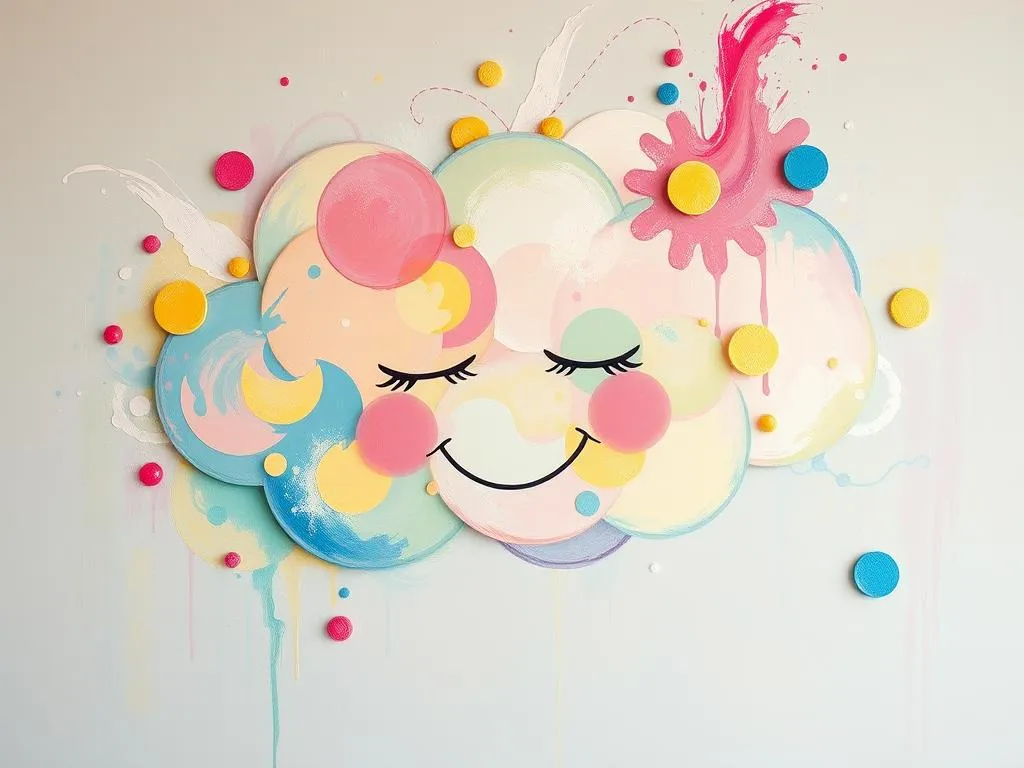
Dreams have long fascinated humanity, serving as a portal into our subconscious minds. They can be vivid, surreal landscapes filled with strange characters and events, or they can be rooted in our daily lives and experiences. Each dream holds significance and potential meaning, often revealing hidden truths about our thoughts, emotions, and desires. The activation of symbols in dreams can provide profound insights into our waking lives, making dream interpretation a compelling area of exploration for those seeking to understand themselves better.
Symbolism and Meaning
In the realm of dream interpretation, symbols serve as the language of the subconscious. They are not always straightforward, as their meanings can vary significantly based on personal experiences, cultural backgrounds, and emotional states.
One of the most common symbols found in dreams is water. Water often represents our emotions and the subconscious mind. Calm water might indicate peace and clarity, while turbulent water could signify emotional turmoil or uncertainty. Interestingly, the state of the water can reflect your current emotional state. If you dream of swimming effortlessly in clear, calm waters, it might suggest that you are in touch with your feelings and navigating life smoothly. Conversely, if you find yourself struggling against a powerful current, it could imply that you are feeling overwhelmed or out of control in your waking life.
Another powerful symbol is flight. Dreaming of flying can represent a desire for freedom, escape, or a need to rise above your current circumstances. In some cases, flying may indicate a sense of empowerment and achievement. However, if the flight is accompanied by fear or a sense of falling, it may reflect anxiety about a situation in your life or a fear of losing control. The context of the flight—whether you are soaring high, struggling against the wind, or unable to gain altitude—plays a crucial role in deciphering its meaning.
Chase dreams are also prevalent, where the dreamer finds themselves being pursued by an unknown entity or person. This can symbolize avoidance of a particular issue or fear in your waking life. The nature of the pursuer can add layers to this interpretation; for instance, a wild animal might represent primal fears or instincts, while a faceless figure could embody a more abstract anxiety or unresolved conflict.
The presence of houses in dreams often signifies the self or the dreamer’s mind. Different rooms can represent various aspects of the psyche, with the basement or attic often symbolizing repressed memories or hidden thoughts. If you dream of exploring a familiar house, it might suggest self-exploration or a desire to confront past issues. Conversely, if the house is unfamiliar or in disarray, it could signify feelings of instability or confusion in your life.
While these symbols can provide a general framework for interpreting dreams, it’s essential to remember that personal context is key. The same symbol can evoke different meanings based on your experiences and emotions. For deeper understanding, reflect on what these symbols represent in your life and how they might connect to your current circumstances.
Key Scenarios and Variations
Dreams are unique to the individual, and variations in scenarios can significantly alter the interpretation of symbols. For example, consider the act of driving in a dream. If you find yourself confidently steering a vehicle down a smooth road, it may indicate that you feel in control of your life’s direction. However, if you are lost or unable to steer the vehicle, it could symbolize feelings of powerlessness or confusion about your path.
Another common scenario involves falling. While falling can evoke feelings of fear or helplessness, the context of the fall matters. If you dream of falling but then suddenly wake up and feel exhilarated, it may signify a release of tension or a willingness to let go of fears. On the other hand, if the fall is continuous and you feel dread, it may reflect anxiety about a situation in your life where you feel you are losing control.
Meeting deceased loved ones in dreams is another poignant scenario. These encounters can be comforting or distressing, depending on the nature of the relationship. A positive meeting might symbolize unresolved feelings or a need for closure, suggesting that you are processing grief or reminiscing about shared memories. Alternatively, a negative interaction could indicate unresolved issues or feelings of guilt that need to be addressed.
Recurring dreams are particularly significant and often indicate unresolved conflicts or persistent emotions. If you find yourself dreaming of the same scenario repeatedly, it may be your subconscious urging you to confront an issue in your waking life. The specific details of the dream can offer clues about what needs attention.
Ultimately, the interpretation of these dreams hinges on the dreamer’s personal experiences and emotions. Encourage readers to explore their dreams and the variations they experience, as this can lead to deeper insights about their inner worlds.
Real-Life Connections and Takeaways
Connecting dream symbols and scenarios to real-life situations can provide valuable insights into personal challenges and aspirations. Understanding the messages hidden within your dreams can guide you in navigating your waking life with greater self-awareness.
One practical approach is to maintain a dream journal. By recording your dreams immediately upon waking, you can capture the details and emotions associated with them. Over time, patterns may emerge that reveal underlying themes or issues you may need to address. This practice not only enhances your memory of the dreams but also serves as a tool for self-reflection and growth.
Reflect on the emotions you experienced during the dream and upon waking. Emotions are often the key to understanding the underlying message of the dream. For example, if you felt fear during a chase dream, consider what aspects of your life currently evoke similar feelings. Are there situations you are avoiding or conflicts you need to confront? Acknowledging these emotions can facilitate personal growth and healing.
Additionally, consider the symbols and scenarios in your dream within the context of your current life situation. Are there connections to recent events, relationships, or challenges you are facing? This reflection can provide clarity and direction in addressing real-life issues.
It may also be beneficial to engage in meditative practices or visualization techniques to explore your dreams further. Visualize the dream scenario in your mind, paying attention to the symbols and feelings that arise. Allow yourself to delve deeper into the narrative of the dream, seeking to uncover its significance beyond the surface level.
Finally, don’t hesitate to seek support from others. Sharing your dreams with trusted friends, family, or a therapist can provide new perspectives and insights. They may offer interpretations or reflections that you hadn’t considered, enriching your understanding of the dream’s meaning.
In conclusion, the hidden meanings behind dream symbols and scenarios can serve as powerful tools for self-discovery and personal growth. By engaging with your dreams and reflecting on their significance, you can uncover insights that help you navigate your waking life with greater clarity and purpose. Embrace the activation of these symbols, and allow them to guide you on a journey of self-exploration and understanding.







